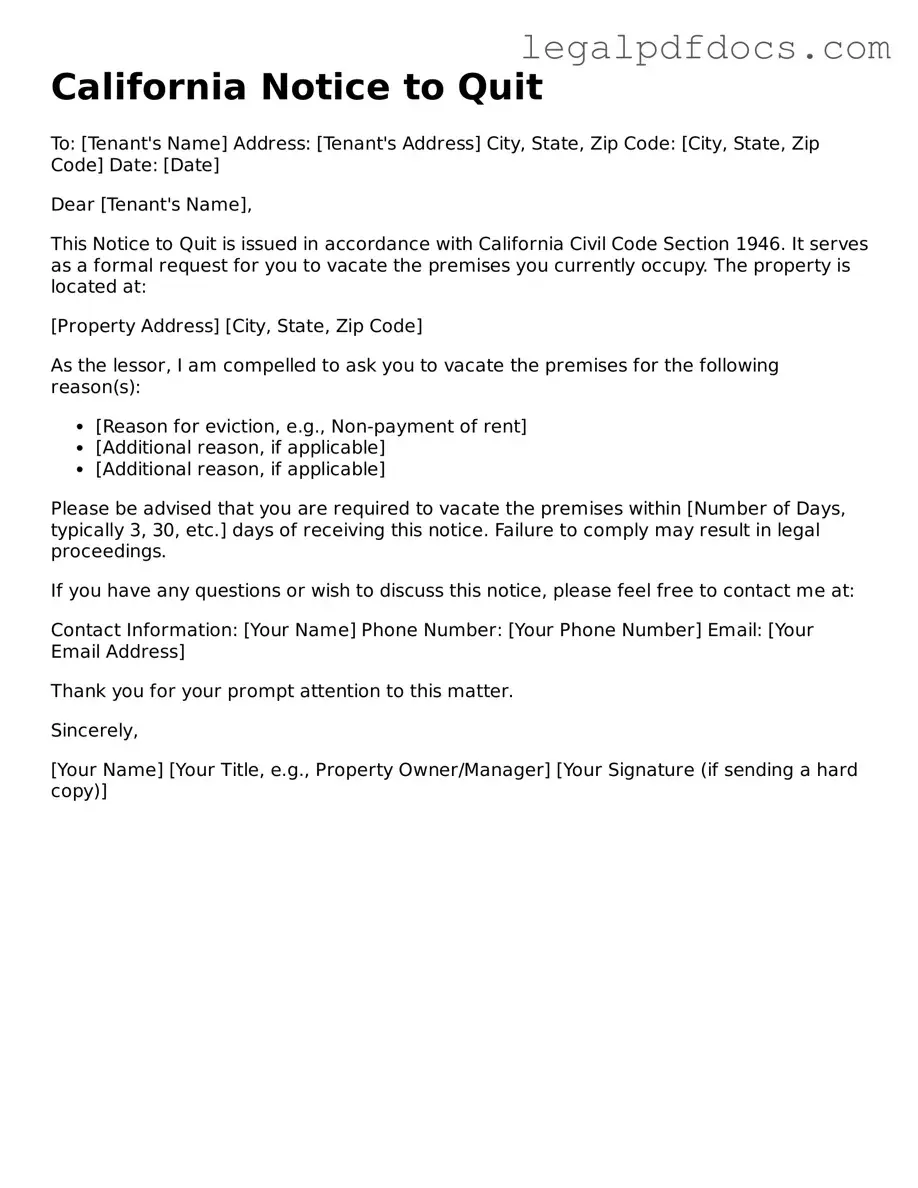Official Notice to Quit Form for California
The California Notice to Quit form is a legal document that landlords use to inform tenants of the termination of their lease agreement. This notice outlines the reasons for eviction and provides tenants with a specific timeframe to vacate the premises. Understanding this form is essential for both landlords and tenants to ensure compliance with state regulations.
To get started on filling out the Notice to Quit form, please click the button below.
Open Notice to Quit Editor Here
